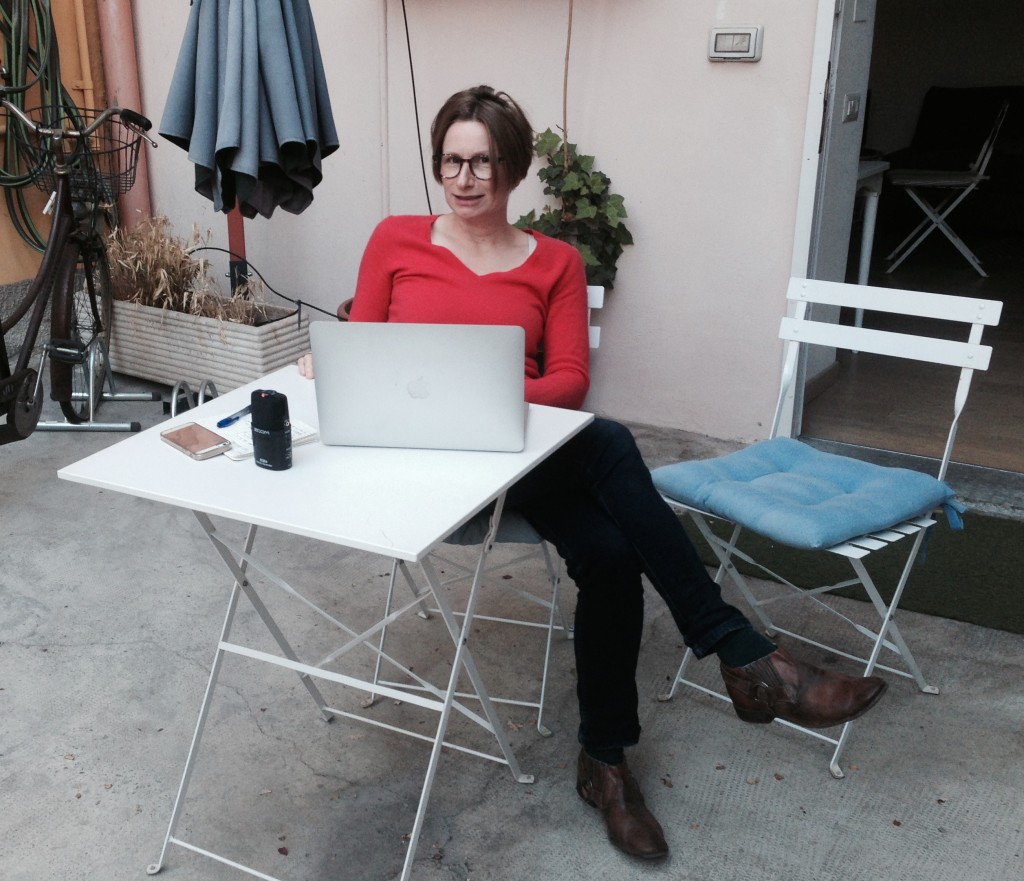
<Anna Bromley enjoying the Senseless Residency
Proposal for the Senseless Residency program
Berlin, 01.08.2017
When reading your call for projects among my emails and its thematic perspective towards the „senseless“, I thought that this might be the perfect realm for writing a chapter of my book on the practise and aesthetics of silliness.
My book, by the working title Silly Knowledge which is in preparation since Mid-2016, rediscusses the every-day-aesthetics, the educational failure, the social practice and micro-politics of silliness, frivolity, and zanyness as phenomena that are barred from western conceptions of recognition and understanding. In it, I wish to offer historicizations that give insights into the relation of this marginalized humor-practice and the norm of making sense after the enlightenment, as well as to the representation of knowledge and social status. Silliness is a form and practice of humor which has been deemed unworthy of philosophy until today.
Unlike joke-telling or irony, there is no such thing as an art of silliness. On the contrary: Silliness doesn`t follow a sophisticated dramaturgy and thus confronts us with a messy kind of humor. Silliness comes into play when temporary collectives form in a spontaneous solidarity against authorities and engage in hard-to-stop paroxysms of giggling. You can`t make status or representation by behaving silly; it doesn`t contribute to any sense-making. Because of this, I fnd the Senseless Residency to be a perfect environment to introduce and discuss my project.
As starting point for my treatment serves Michael Glasmeier`s and Lisa Steib`s anthology Albernheit. In this, the authors unfold their defnition of silliness on the case of Hugo Ball`s aesthetics. I want to argue that what we see in Ball`s work, is exactly the tipping point which marks the silly turning into an aesthetic style that
can be recognized as artistic and therefore is the refnement of silliness into something else, or more precise ly something that can be commodifed. Because of this, I argue that silly examples are exactly to be found in the process before the forming of recognizable styles: may these be artistic, political, or comedian. To dis cuss this beforeness, it might be insightful to consult the recent history of alterglobalization movements which have been widely labelled tactical frivolity. They employ silly visuals very strategically: with seemingly childish, or clownish dresscodes and unpredictable behavior. I presume that these derive from silly situations in preliminary rehearsals.
These research questions and contents have a local connection to Milan, which I would like to examen: The Anti-Globalization protests of the Zero-Years often describe their main inspiration to be Milan`s Tute Bianche. And perhaps the Tute Bianche costumes can be seen as reminiscent of Hugo Ball`s Dada-costumes.
Would they also see a connection? Inhowfar did silliness play a role in their preparations? During my resi dence-stay, I wish to exchange with Tute Bianche activists, to be able to fnd out about their views and perspectives on the threads which I weave into my book.